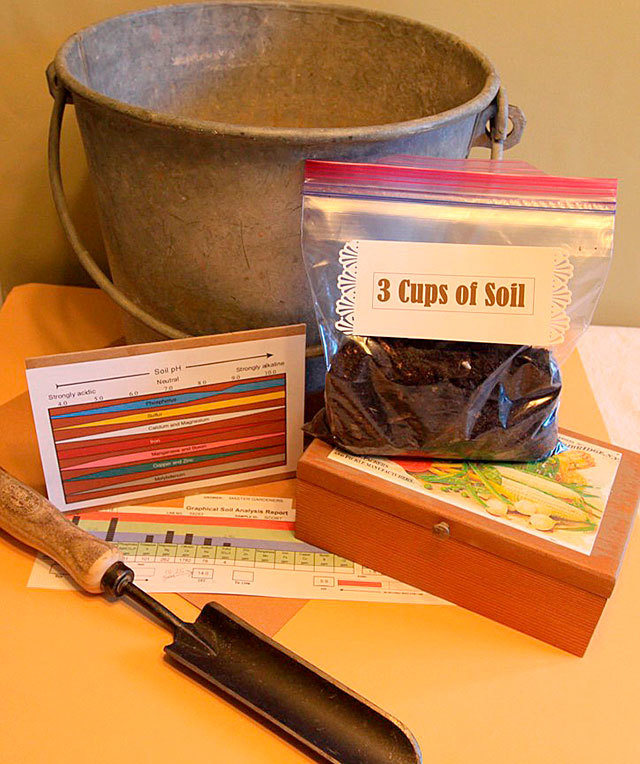By Judy English
The most beneficial $20 investment you make this year in your garden/landscape is likely to be having your soil tested by the Clallam Conservation District.
“Soil testing is a tool used to help make informed decisions about the management of soil nutrients — whether for a garden, lawn, field or forest. Soil tests provide information on fertilizer needs, helping to save money and time. Soil tests also can help protect the environment from contaminated run-off or groundwater pollution caused by over-fertilization.”
A soil test can be the first step to a successful garden.
Your soil will be tested for: pH, nitrate-nitrogen, phosphate, potassium, magnesium, calcium, sodium, organic matter and cation exchange capacity.
A soil test should be done every two or three years. Remove mulch and vegetative matter from the sampling site before collecting sample.
Call the Conservation District office (775-3747 ext. 5) to borrow a soil extraction probe for use in taking your soil samples.
If collecting the samples without the probe, follow this simple process: Using a shovel, remove a slice of soil 4-6 inches deep. Keeping it on the shovel, from the center of the slice, cut a strip ½-inch wide top to bottom and put it into a bucket. Repeat this process 10 to 15 times from random locations in the sampling area. Mix samples, breaking up large clumps. Measure three cups of soil into a zip-lock bag and seal.
Take the soil sample to the Conservation District office on the first or third Wednesday of the month between 9 a.m.-4 p.m. To maintain soil nutrient values, refrigerate soil sample if you cannot get to the Conservation District office within 24 hours.
In about 14 days, your soil test results will be available. A Conservation District staff member will help interpret the results and determine an appropriate schedule for applying recommended nutrients for your crops/plants.
The Clallam Conservation District office is at 228 W. First St., Suite H, Port Angeles, and is open from 9 a.m.-4 p.m. Tuesdays-Thursdays.
Identifying the microclimates that exist within your specific growing area also is important to achieving your gardening objective. Whether you are establishing a new garden or redesigning an existing garden, begin by observing/recording the sun’s position as it changes throughout the year.
In Washington, the winter and summer sun paths are significantly different. Walk your site to note which locations are fully exposed to rainfall and those protected by trees and/or structures.
Track rainfall amounts so they can be compared year to year and note areas with poor drainage.
Cold air sinks, so an area at the base of a hill or slope usually will be cooler in winter. All of these factors create microclimates individual to your specific garden area and impact how various plants will grow and produce.
Detailed information of the various soil types throughout Clallam County and how they came about is available online at “Soil Survey, Clallam County Washington,” USDA, 1951.
Judy English is a Washington State University-certified, Clallam County Master Gardener.



